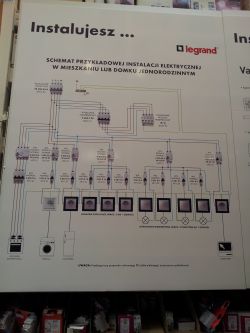This terminology blows me up. From the meter I have 5x16 led to the switching station, but the protective one is not connected to anything. In the switchgear, the blue one is introduced to the main disconnector, then it goes to 4 differentials. The AN coming from the differentials are separated into 4 separate buses that connect only those circuits protected by a given differential. And the PE rail is one and it is connected with all the evidence and the strip footing. I repeat once again that when I had the fifth protective one connected to the PE TO busbar the differentials did not work, because in the box with the meter the neutral is grounded.



